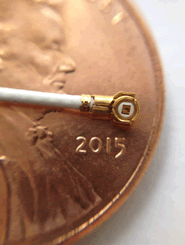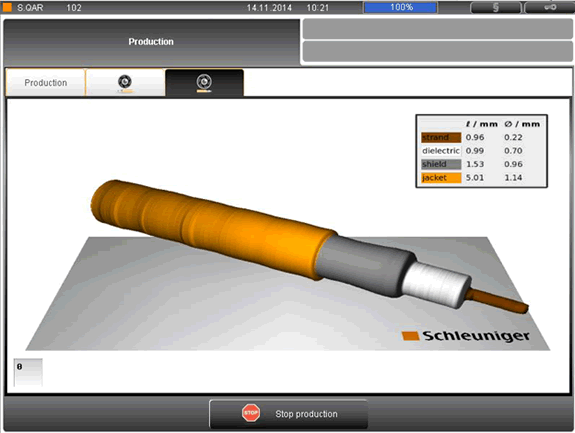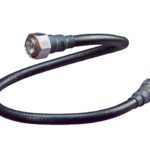Ultra-Miniature RF Cable Assemblies – Automation Challenges
By Pete Doyon, VP Product Management, Schleuniger
Today’s mobile electronics are smaller, thinner, and lighter. Yet mobile devices such as cell phones, tablets, and portable GPS units are more powerful than ever. Wireless Internet connectivity, RFID, and Bluetooth have become essential applications in today’s electronics, and these capabilities require more complex transmission mechanisms, increasing the requirements for the antenna components mounted inside of the device. In order to manufacture smaller devices, while also meeting the demand for more powerful, next-generation wireless capabilities, smaller cable assemblies and connectors are coming into the marketplace.

Ultra-miniature RF cable assemblies enable smaller, more powerful mobile electronic devices.
Ultra-miniature RF cable assemblies are now quite common. These specialized cable assemblies are used to connect tiny antennas to the circuit board inside mobile electronic devices. They require connectors that not only feature a very low mating height, to fit within the small profile of the device, but they also need to easily mate and unmate so the device is serviceable.
One of the smallest connector systems currently in use has a mating height of only 1.2mm. These tiny RF connectors are typically interfaced with a 36AWG micro-coaxial cable with an outer diameter of 0.81mm (0.032”). Smaller connector systems with even smaller micro-coaxial cables are already in development and are poised to become the new standard.
Manufacturers face the challenge of working with and processing these tiny wires and components, while maintaining the accuracy and speed needed to keep up with a growing market.
Another challenge manufacturers face is quality control. In many cases, strip lengths and diameters must be viewed, measured, and recorded to make sure they are within the required tolerances before terminating. With micro-coaxial cable, this would be extremely complicated and time-consuming to accomplish manually. In addition, the use of microscopes or magnifying glasses is not only inefficient, but the quality of such measurements is subject to human error. Instead, a powerful camera with a 360-degree view that automatically measures and records the dimensional data is used to guarantee quality and ensure traceability of the data.One of the major challenges for manufacturers working with ultra-miniature cable assemblies is overcoming human error and maintaining consistent precision. The tiny cables need be measured and cut to length within very tight tolerances. Next, one or both ends of the micro-coaxial cable must be stripped with up to three steps: jacket, shield, and center conductor. All of this needs to be accomplished in a high-production environment. Due to the small size of the cable, it has become practically impossible to achieve the required length tolerances with manual work or with semi-automatic tools.

A camera that is able to display a 360-degree view of the wire can ensure processing quality.
Achieving flexibility while maintaining speed also presents a challenge for manufacturers. The end of the micro-coaxial cable must be terminated using an automatic crimping press designed for the specific connector and cable combination being processed. Manufacturers need an automatic machine that can accommodate a wide range of cable sizes and connector types and also allow quick changeover between jobs. The automation platform must be flexible and have space to integrate additional processing steps, such as tinning, window stripping, stacking, etc., because transporting the cables between the individual processing steps is also problematic. Even the smallest touch to the cable-end can bend and render it unusable. In the worst-case scenario, this can even result in failure of the end product. Therefore, it is critically important to have a fully automatic cable assembly system automation system that incorporates all assembly and quality control process steps.
As the need for smaller cable assemblies continues, speed, precision, and quality control will be hot topics among manufacturers dealing with ultra-miniature RF cable assemblies. Manual hand tools are no longer sufficient for manufacturing mobile electronic devices, but a fully automatic machine can help overcome the challenges manufacturers face and will save time, money, and waste in the long run. Precision, flexibility, high production output, and quality monitoring with traceability of data are things that should be considered as manufacturers working with ultra-miniature RF cable assemblies consider future equipment purchases.
After all, the demands on these manufacturers are only expected to grow bigger as devices get smaller.





